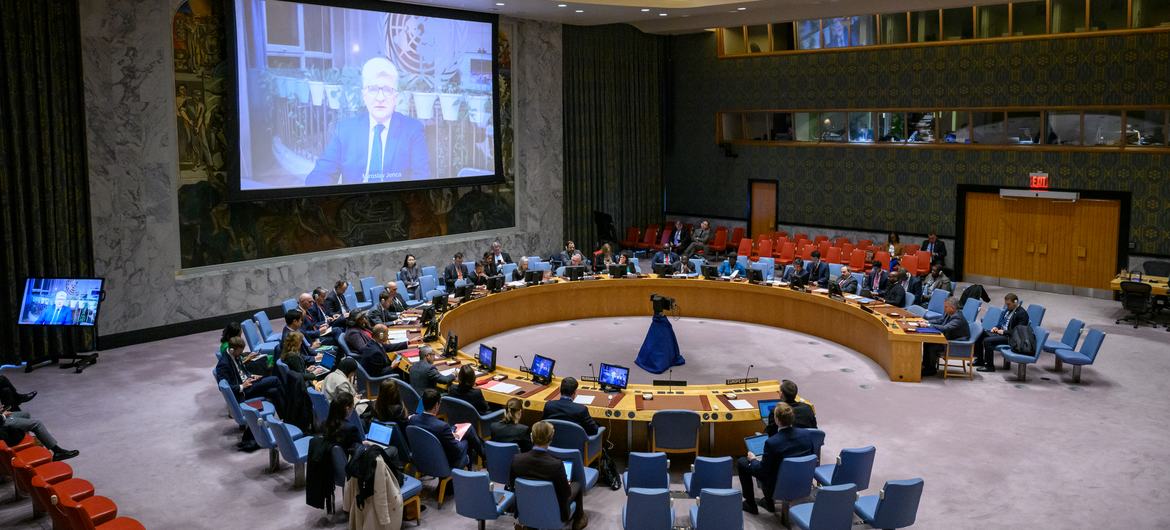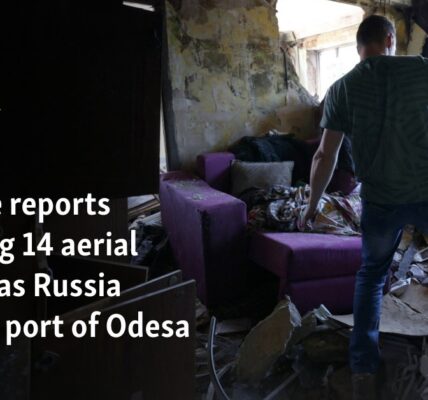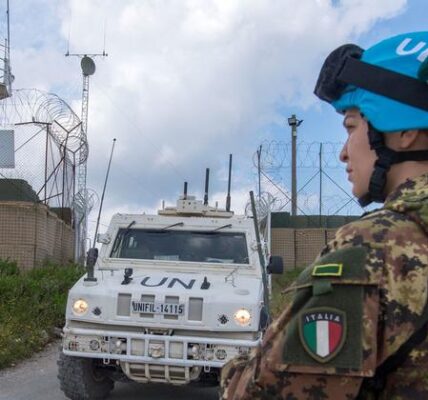As the conflict in Ukraine enters its second winter, there is a growing number of civilian casualties.
The Monitoring Mission reported that the number of casualties includes confirmed deaths using their procedures, but they warned that the true number may be much higher due to difficulties and the need for time to confirm.
Danielle Bell, leader of the Monitoring Mission, stated that the death of ten thousand civilians marks a tragic turning point for Ukraine. As the war approaches its 21st month, there is a concern that it may become a prolonged conflict, causing unimaginable suffering for those involved.
After monitoring, it was discovered that a large number of civilians were killed in areas far from the fighting, mainly because the Russian military used long-range missiles and loitering munitions to target populated areas throughout the country.
Ms. Bell cautioned that almost half of the civilian injuries in the past three months have taken place in areas far from the battle zones. This means that there is no location in Ukraine that can be considered entirely secure.
Security Council meeting
In New York City, the United Nations Security Council convened to address the current state of affairs in Ukraine. During the meeting, ambassadors were provided with updates from high-ranking officials.
Miroslav Jenča, Assistant Secretary-General of the Department of Political Affairs, cautioned that there are signs of a potential increase in attacks on civilians and civilian infrastructure in Ukraine during the approaching winter season.
He stated that the consequences will be severe for millions of Ukrainians as they prepare for their second winter during wartime.
Relentless conflict
He stated that recent events demonstrate the continuousness of the ongoing conflict, and mentioned that Russia’s air assaults continue throughout the entire country. On November 11th, Kyiv was targeted by missile attacks for the first time in two months.
Although there were no casualties in the capital that night, there have been ongoing attacks on Kyiv and its surrounding areas, including drone strikes over the weekend. Mr. Jenča reported that other regions of Ukraine, such as Kherson, which was recaptured by Ukraine a year ago, are still facing frequent and severe bombardments, leading to the deaths of innocent civilians.

Miroslav Jenča (appearing on screens) providing an update to the Security Council.
Humanitarian situation
He also notified members of the Security Council that the humanitarian conditions are quickly worsening, aggravated by assaults on energy facilities and expectations of freezing weather.
The UN, along with its partners and Ukrainian authorities, has put in motion a Winter Response Plan. It is imperative for the international community to provide immediate assistance in order to supply necessary resources for 1.7 million individuals in need.
He also stated that we still require further contributions to reach the 54% funding mark for the 2023 Humanitarian Response Plan for Ukraine.
According to Mr. Jenča, around four million Ukrainians living in Russian-controlled areas of Donetsk, Luhansk, Kherson, and Zaporizhzhia regions are not accessible to humanitarian agencies due to restricted access.
Humanitarian organizations are prepared to increase their activities in these regions, as long as they are granted access and provided with sufficient assistance.
Ensuring access to food both within a country and on a global scale.
In addition, during his presentation to the Council, Matthew Hollingworth, the Country Director of the World Food Programme (WFP), discussed the effects of the Russian invasion on food security in Ukraine and around the world.
He stated that due to conflicts, Ukrainians are unable to reach markets to purchase food and farmers have expressed that they are unable to produce food anymore. This has a significant effect both in Ukraine and globally.
The conditions are especially grave in communities close to battle zones, with concerns that they will only deteriorate during the winter season.
Approximately 20% of Ukrainian households experience significant food insecurity. The severity of this issue increases in areas closer to conflict, according to the speaker.
Possible rewording: Potential influence in the future.
Mr. Hollingworth also notified ambassadors that the land in Ukraine is dangerous due to the presence of mines and unexploded weapons, making it impossible for families to cultivate crops for sustenance.
He stated that if the food infrastructure continues to be attacked and sea export routes remain blocked, it will greatly affect the future agricultural production.
“The exportation of agricultural products ensures that individuals worldwide have access to food. It should be noted that as of February 2022, Ukraine contributed nine percent to global wheat exports, 15 percent to maize exports, and 44 percent to sunflower oil exports,” he stated.
Source: news.un.org



